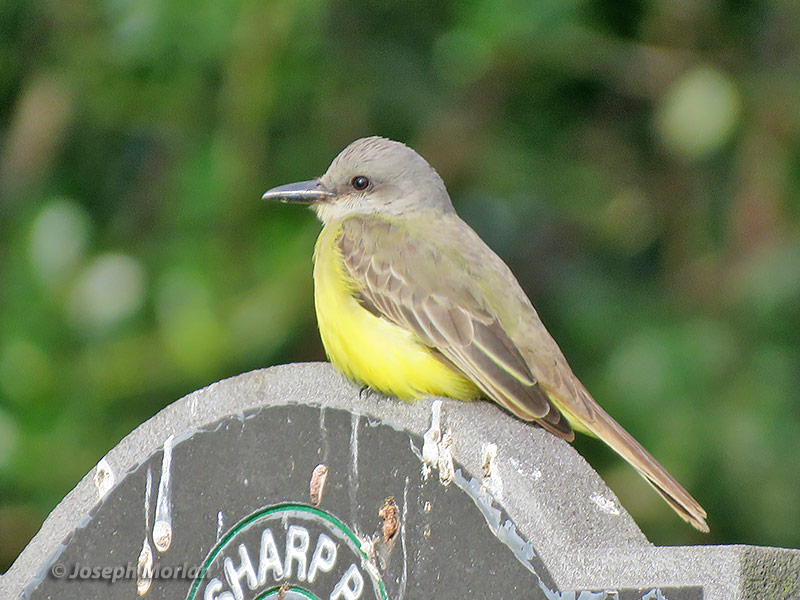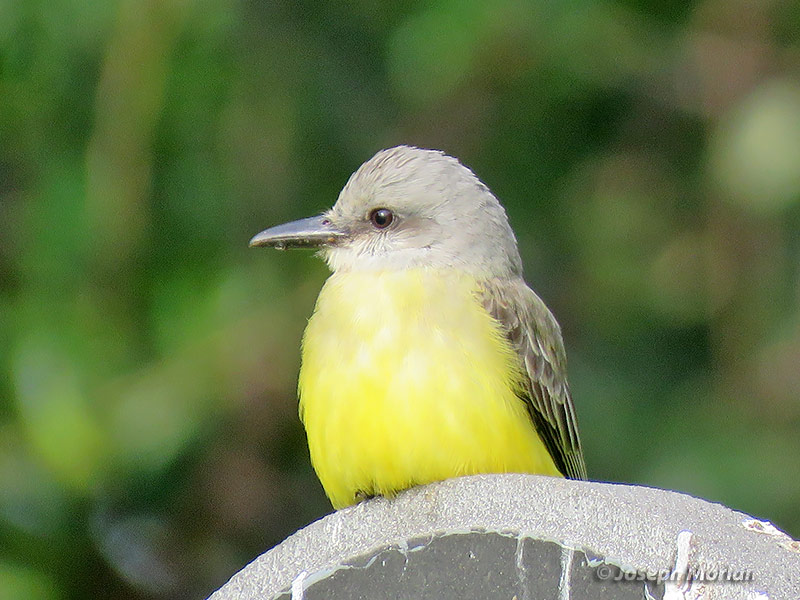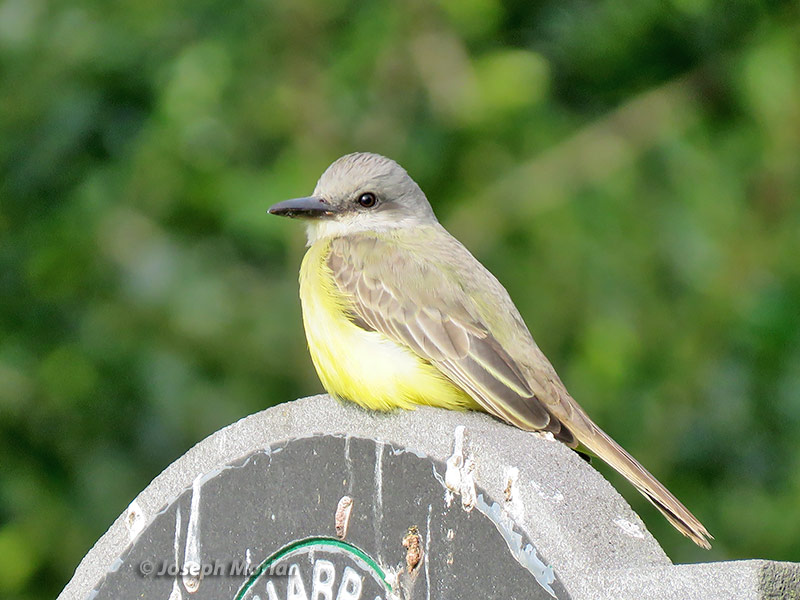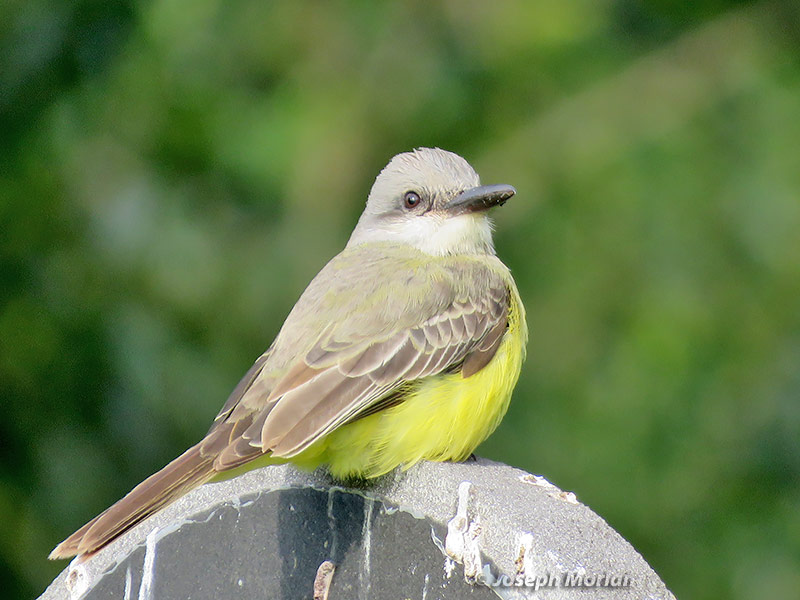



Today participating in Pacifica for the San Francisco Christmas Bird Count I found a very cooperative Tropical Kingbird hunting from the sign for the 8th tee of the Sharp Park Golf Course. Access is on the west side of Bradford Way just north of Fairway Drive. There is an open gate and a "no dogs" warning sign. If the gate is closed, the bird can be seen from the road through the fence.
Description: An obvious kingbird, with the underparts bright yellow. The throat was white and extended well behind the eye. There was a grayish wash across the breast that combined with the yellow to produce a greenish band. The bill was all dark, quite large and heavy. The crown was grayish and there was a darker gray mask through the eyes. The back was olive brown, with a hint of green. The wings were similarly olive brown with faint edges to the wing coverts. The tail appeared brown above and lacked white anywhere. There was no obvious white edging or tipping to the tail. The tip of the tail was slightly paler due to wear and appeared decidedly notched because the central tail feathers were shorter than the others. A pointed rusty brown retained juvenile tertial is visible on the right side indicating a bird of the year. The bird foraged widely over the golf course, always returning to perch on the sign for the 8th hole. The bird never called during the extensive period of observation.
Discussion: The Tropical Kingbird is one of the most abundant flycatchers in the neotropics where it continues to benefit from deforestation. It prefers disturbed areas, towns, villages, parks, gardens and pastures. Three races are recognized. This is T. m. satrapa which ranges from the southwestern United States to northern South America. Birds from Mexico to Venezuela and offshore islands were formerly recognized as "T. m.chloronotus" which is now merged into T. m. satrapa. These birds are generally paler than populations further south. Satrapa sometimes occurs as a vagrant along the West Coast of the U.S.
Canon PowerShot SX60 HS.